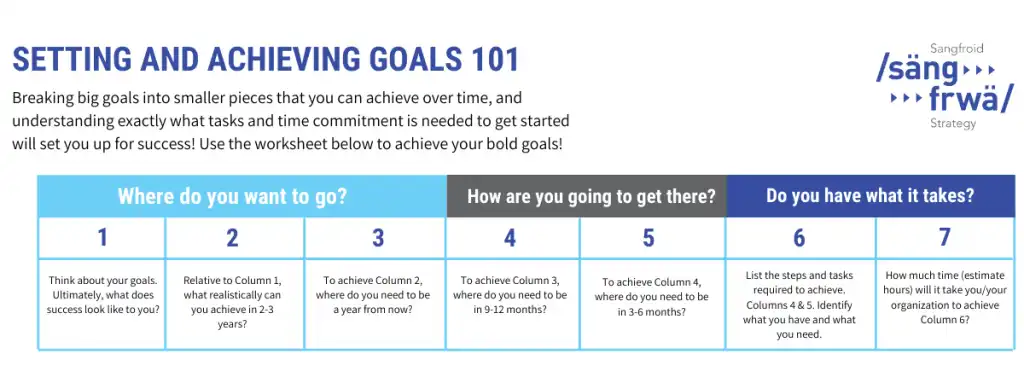Information technology is quickly becoming more of a necessity. The more technology intwines itself into business, the more crucial it is to your business goals. As a result, the line between developing an IT strategy and developing a business strategy blurs.
Yet, most business leaders aren’t trained in IT. This lack of training can make it difficult to build an effective IT strategy. Too often, executives and IT leaders are misaligned on their objectives, adding further complications to creating an IT strategy.
Without getting too technical, this article will help business owners institute their own IT strategies. We’ll explain what IT strategies are, why you need one, and how to create one step-by-step.
What is an IT Strategy?
An IT strategy is a strategic plan that showcases how technology within your organization can provide the most business value. It generally includes a set of objectives, tactics, and resource allocation plans that highlight how IT supports your larger business goals.
Having everything written down in an IT strategy document helps keep everyone on the same page. Additionally, anyone at your organization can refer to this document to verify expectations.
A business IT strategy should include:
- Specific technologies your business needs to function
- Budget plans
- Role specifications
- Where your IT is now vs. where you want it to be
- What you need to get your IT to where you want it to be
- Predictions about possible future needs
- Risk management strategies
- Implementation standards
- How each technology asset support your overall business strategy
|
Take a Closer Look at a Few Things You Might Want in Your IT Strategy |
Why You Need an IT Strategy for Your Business
A business’s IT strategy plan instructs the IT department on technology usage. Since it always has overall goals in mind, it reduces needless spending on unnecessary projects.
Additionally, some organizations have department-specific technology. For example, accounting software should stay in the accounting department. A written document can prevent misorganization.
Developing an IT strategy also provides a significant competitive advantage. Knowing exactly which technologies you want to use, how, and why will put you miles ahead of someone who hasn’t put much thought into it.
How to Develop an IT Strategy
1. Set Your Goals
Your goals are the crux of your IT strategy. Everything you add to your plan is intentionally chosen to support these goals. As such, you need to establish them before you do anything else.
Most IT strategies support multiple goals. The amount doesn’t matter as much as how actionable and beneficial each goal is. You don’t need to choose anything too complex. One of your goals could be as simple as reducing the number of help desk calls.
In fact, overly complex goals are not ideal because it’s more difficult to set actionable plans to attain them.
2. Talk to Your Team
Talk to everyone who works in your business environment every day, not just IT. You need a deep understanding of your business functions. Sometimes, technology solutions can address seemingly unrelated problems.
During this phase, you should also communicate the importance of your strategy plan. This helps get all key stakeholders on board.
3. Set Your Scope & Create a Schedule
Once you’ve identified your goals and talked to your team, decide what to include in your IT strategy. This could include hardware, software, security, and training.
Set realistic timelines that prioritize higher-stakes goals. Some objectives may be easier to achieve than others. It’s best to break large goals down into smaller milestones to make it more manageable.

Source: Sangfroid Strategy
4. Assess Your Current IT Environment
Conduct a thorough review of all your IT systems and processes. Identify all areas that need improvement and pinpoint what works. This could include slow outdated hardware or effective cybersecurity measures.
Knowing what works and what doesn’t will directly inform your strategy roadmap.
5. Build a Roadmap
Your roadmap is a document that outlines your IT strategy in detail. It includes the specific steps that will lead towards your goals. You may also include tactics to help maintain day-to-day productivity as business continues during your project.
Your roadmap should include milestones and timelines, as well as a plan for measuring progress. Be sure to communicate your roadmap to all stakeholders and regularly update it as needed.
6. Review Key Metrics
Regularly reviewing key metrics related to your goals helps ensure IT strategy success. For example, if one of your goals is to reduce data center downtime, review its uptime statistics.
Use these metrics to adjust your strategy as needed. If you’re not making progress on a particular goal, it may be time to rethink your approach.
7. Update as Needed
Your IT strategy is not set in stone. As your business evolves, your IT needs will too. Be prepared to update your strategy as needed to ensure it continues to support your business goals.
Developing an IT Strategy is Easier With Help
This guide can help you start your IT strategy, but unexpected events may still happen. Plus, you need to know where to look when it comes time to procure new tools within your budget.
Hiring an IT consultant can help smooth out the IT strategy development process. A good consultant gets to know your business so they customize your IT strategy accordingly.
Attentus Technologies offers a wide range of IT consulting services. Our experts can help you with your IT roadmap, digital transformation projects, and long-term performance enhancements.
Get in touch with us to request a quote for IT strategy consulting services.

